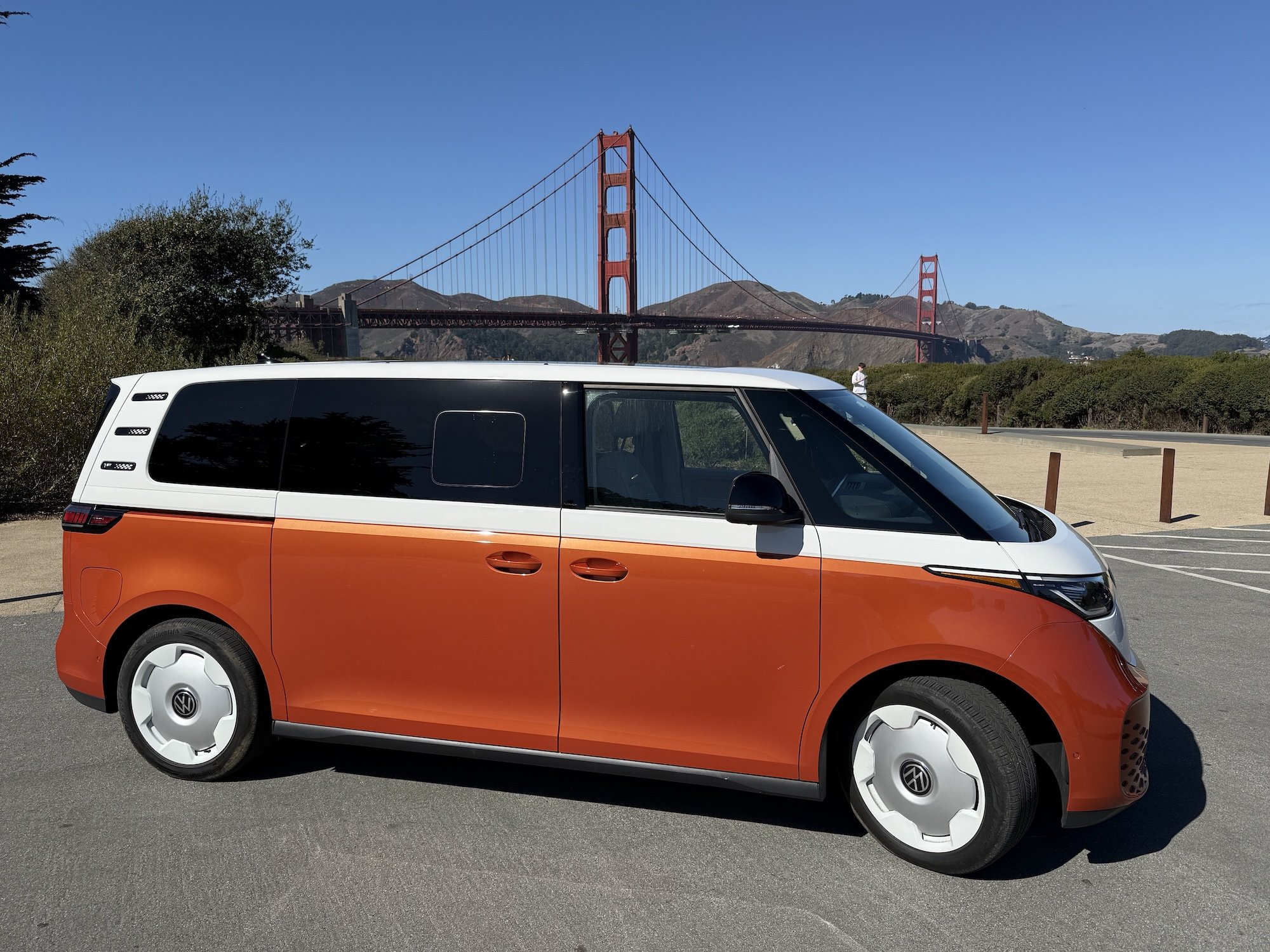2025 Volkswagen ID.Buzz EV is a modern-day homage
(Larry Printz photo)
By Larry Printz | TRIBUNE NEWS SERVICE
The 2025 Volkswagen ID.Buzz is more than an homage to another era. It’s representative of Volkswagen’s American market conundrum.
The German automaker is celebrating its 75th year in America, an astounding feat of marketing for a company established by Adolf Hitler in the late 1930s and popularized in the United States by an ad agency whose co-founder, William Bernbach, was Jewish. Volkswagens sold stateside because they were unlike anything being offered by Detroit at the time. Vee-dubs eschewed chrome, fins, annual model-changes and gobs of horsepower for homely looks, few frills, excellent build quality and economical operation. Certainly, Volkswagen’s Type 2 Microbus was that. It wasn’t about driving fast, as its meager rear-mounted, air-cooled engine provided leisurely acceleration. And its style was proudly utilitarian. VW’s fashion was anti-fashion.
However, VW misinterpreted its success. The easiest way to describe it is to quote a Volkswagen dealer principal from Virginia who once told me that Volkswagen still didn't grasp the American market after all these years in the country. And they have continually validated his assertion. Consider this. After showing the Type 2-themed Bulli concept at the 2011 Geneva Motor Show, Volkswagen offered Americans the 2012 Volkswagen Routan, which was little more than a Chrysler minivan in drag. Unconventionality made the anti-establishment Microbus a unique lifestyle statement the automaker has never replicated. That’s because Volkswagen was, in reality, the establishment.
(Larry Printz photo)
But you can’t go home again. Thankfully, the 2025 Volkswagen ID.Buzz doesn’t.
The battery-electric ID.Buzz rides atop the corporate Modular Electric Drive (MEB) platform underpinning the Volkswagen ID.4. Motivation comes from a rear electric motor and a 91-kWh battery that sends 282 horsepower and 413 pound-feet of torque to the rear wheels. All-wheel-drive models get a second motor up front that brings total horsepower to 335, while providing an additional 99 pound-feet of torque to the front wheels.
Offered in three trims, Pro S and Pro S Plus and 1st Edition, the ID.Buzz offered stateside comes with three rows — the shorter two-row ID.Buzz will not see showrooms here. Unlike the tall, skinny Microbus, the ID.Buzz is fairly wide at 78 inches, and its design makes it seem even wider. Not surprisingly, the cabin is impressively spacious. In fact, the third row boasts an impressive 42 inches of legroom, the most of any third row offered. And with the seats folded, there’s a generous 146 cubic feet of cargo space — more than that of a Chevrolet Suburban (145 cubic feet), Kia EV9 (82 cubic feet) and any minivan, regardless of powertrain.
(Larry Printz photo)
There’s an even keel to the ID.Buzz’s demeanor, one that lacks the sharp burst of acceleration so typical of EVs. It also lacks the one-pedal driving common to EVs. But that’s in keeping with its character. Yet for anyone accustomed to racket generated by the Type 2’s engine, the all-encompassing silence will prove a revelation. It’s then that the ID.Buzz reveals its agreeable, easy-to-drive nature. Steering is responsive, if light in feel, and the battery weight lends the ID.Buzz a secure feel as it gradually leans as corners make themselves known. Its ride is comfortably compliant, although there’s still a bit of hobby-horsing over minor road abrasions. Yet it always remains controllable and possesses an unexpectedly tight turning radius.
(Larry Printz photo)
Once underway, you’ll appreciate the 12.9-inch infotainment touchscreen, although its user interface seems a bit obtuse. Wireless phone charging, eight USB-C ports, a heated steering wheel and ambient lighting comes standard. A Panoramic smart glass sunroof, a 14-speaker Harman Kardon audio system and retractable tow hitch are among the options.
Prices start at $61,545, including destination charge. That may sound expensive, but it’s far cheaper than a 1950-1967 Volkswagen Type 2, which now costs an average of $131,600, according to Hagerty Classic Car Insurance. A 2025 Volkswagen ID.Buzz starts at 53% less. Yes, it lacks the spartan charm of its hippie predecessor. But then again, you’re no longer a hippie either.



